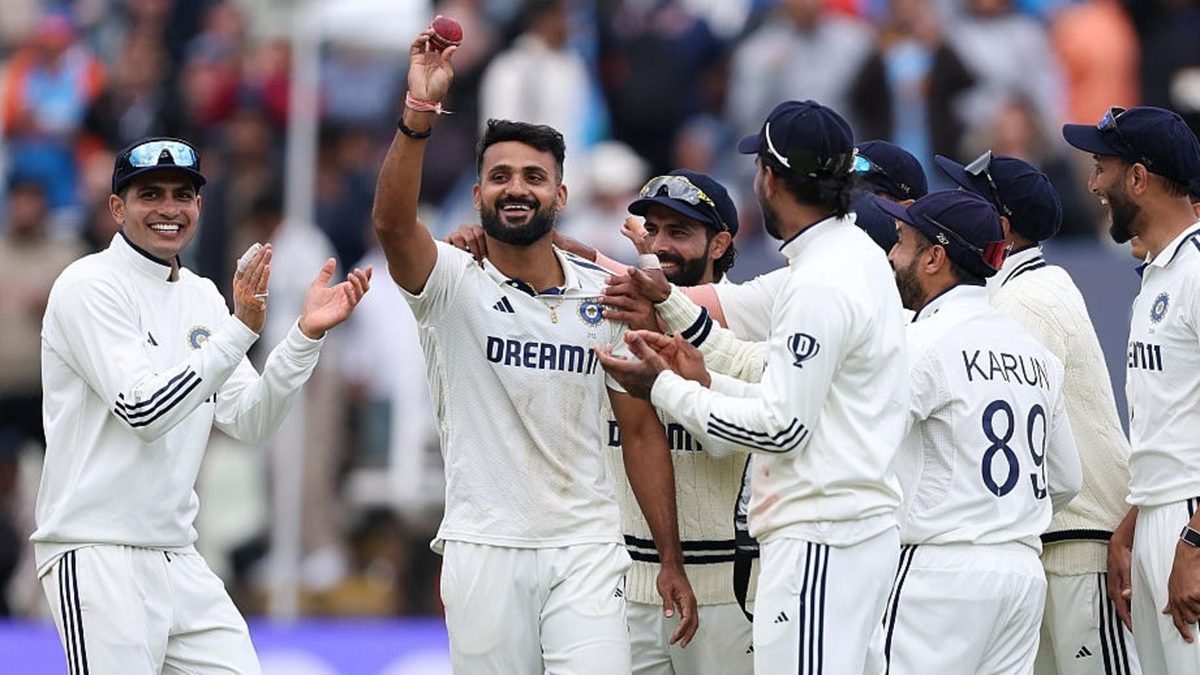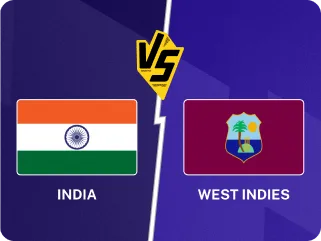
India achieved a historic victory at Edgbaston, but the triumph still masked a muddled selection, writes Naman Agarwal.
When Shubman Gill took the catch that ended the Edgbaston Test off the bowling of Akash Deep, it was symbolic in so many ways. It was as if the cricketing gods had decided to reward them with the final flourish, a deserved closing act for two all-timer performances. After bowling out some of the best batters in world cricket with absolute seeds on a pitch where the home bowlers could extract next to nothing, Akash Deep had earned the “easy wicket” of a tail-ender slogging. And the comfort with which Gill held on to the skier stood in contrast to Mohammed Siraj’s fumble not long back, reminiscent of how safe he made the Indian team and fans feel when he batted.
No one felt it would turn out this way when the game began.
India had rested Jasprit Bumrah despite a week-long gap after the first Test, picking a team that received a fair bit of flak from all corners for being devoid of a clear identity. The emphatic result then came as a gotcha, a mic-drop moment that signified India knew what they were doing.
But was it really a vindication of their selections? Or did the result simply obscure the flaws in the plan?
Also read: Neither 'bat deep' nor Kuldeep: India's muddled selection is a failure of philosophy and logic
Top teams are made up of players who possess the ability to change matches single-handedly. But top teams also construct their lineups in a way that optimises their chances of out-doing opponents based on average outcomes. At Edgbaston, two Indian bowlers shared 17 of the 20 English wickets at an average of 18.47, whereas all the other bowlers averaged 70.84. One batter made 430 runs at 215, while all the other batters scored at 31.50. India’s victory was built on the back of individual brilliance at unprecedented levels more than sound planning.
India picked three frontline bowlers and left out their two best, on what turned out to be the fourth-flattest pitch in England since 2006. While pitch-reading can be a notoriously inexact science, that Edgbaston was going to be a flat surface was not a difficult inference to make on day one. Yet, they replaced Shardul Thakur with Washington Sundar and not Kuldeep Yadav at eight to increase batting depth. The XI didn’t inspire confidence. It neither committed fully to batting, as shown by the choice of an all-rounder (Nitish Kumar Reddy) over a specialist batter (Sai Sudharsan), nor to bowling. The idea seemed to be: bat long enough to avoid defeat, extend the lineup just enough to appear secure, and hope for the best with the ball.
Also read: Gill's reign, Smith's rise: Five takeaways from India's victory over England at Edgbaston
Luckily for them, the best did arrive. Better even. Akash Deep produced the first ten-wicket haul by an Indian seamer since 2018, a staggering return on a surface where fast bowlers were averaging close to 70. But make no mistake: this wasn’t expected. More than a plan bearing fruit, it was a stop-gap call that turned into gold, courtesy Akash’s brilliance, but one that could just as easily have unraveled, given his limited experience. That India didn’t even consider him among the four seamers at Headingley shows where he originally stood in the management’s pecking order.
Even with the bat, India secured a first-innings lead of 180 only after Gill nearly smashed a triple hundred, a once-in-a-career effort. Had he made 150 instead of 269, it would still have been considered a personal success, but that would have brought the deficit down to 60, opening up a lot more avenues for England to make inroads.
Also read: India show the best way to beat Bazball is to outlast it
Sundar’s 42 at No.8 in the first innings helped, but it was Gill who contributed 95 in the 144-run partnership. Shardul might have had a poor outing at Headingley and might not be as reliable a batter as Sundar, but he has bailed India out of trouble with the bat enough times to have been expected to make some runs on the Edgbaston featherbed. Sundar held his own with the ball too, taking a crucial wicket of Ben Stokes in the second innings. But India were largely playing catch-up through the middle overs of England’s first innings. Without the unprecedented new-ball brilliance of Siraj and Akash, that lull might have proved costly. Ultimately, the premium of Kuldeep’s wrist-spin over Sundar’s finger-spin was far greater than the gap between Sundar and Shardul with the bat. India’s win should not obscure that reality.
Also read: Why India need Kuldeep Yadav's wrist spin to attack Bazball's blind spot
India’s performance at Edgbaston deserves celebration. Gill, Siraj and Akash Deep were exceptional, and the team showed character to bounce back after Headingley. But their brilliance was not merely strategy. The fact that India won despite their selection, not because of it, must be acknowledged internally.
Heading 1-1 into Lord’s, India will have Bumrah back, necessitating at least one change. But with the noise around the Lord’s surface indicating it could play out much differently than Edgbaston, there might be a few more selection questions to answer for the visitors. If India repeat the same muddled selection, the odds may not bend their way again.
India don’t need to be perfect. But they do need to be clearer. Edgbaston showed what’s possible when everything clicks. Can India show they have the smarts to build a method robust enough to win, when it doesn’t?
Follow Wisden for all England vs India updates, including live scores, latest news, team lineups, schedule and more. The live streaming details for the ENG vs IND series in India, UK, USA and rest of the world can be found here. For Wisden quizzes, head here.








